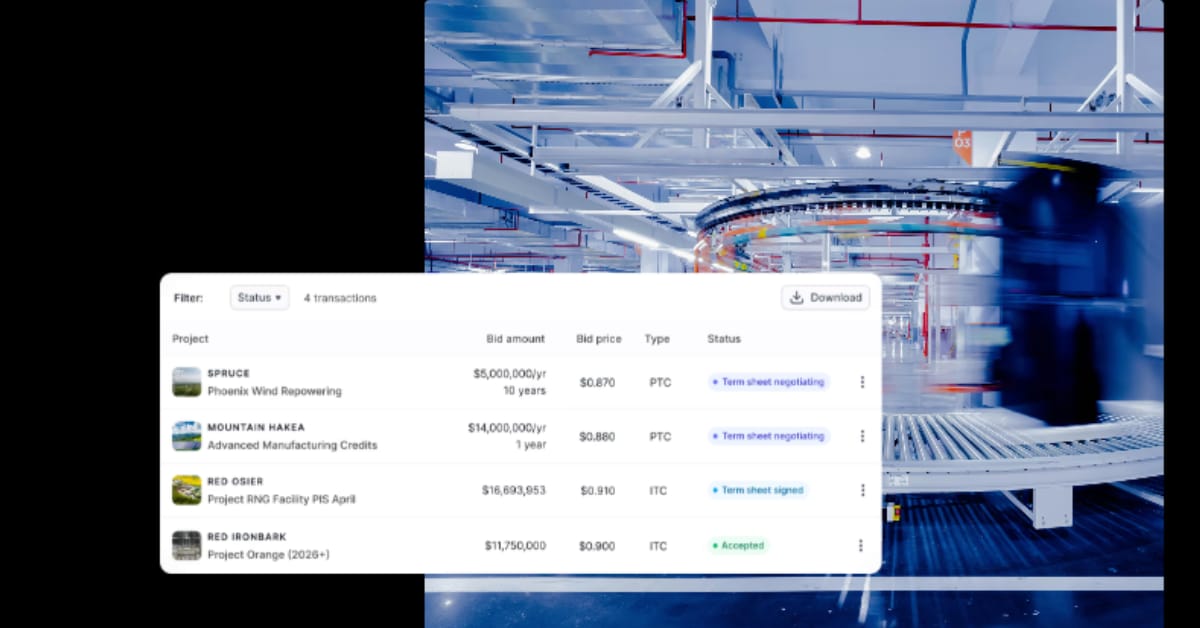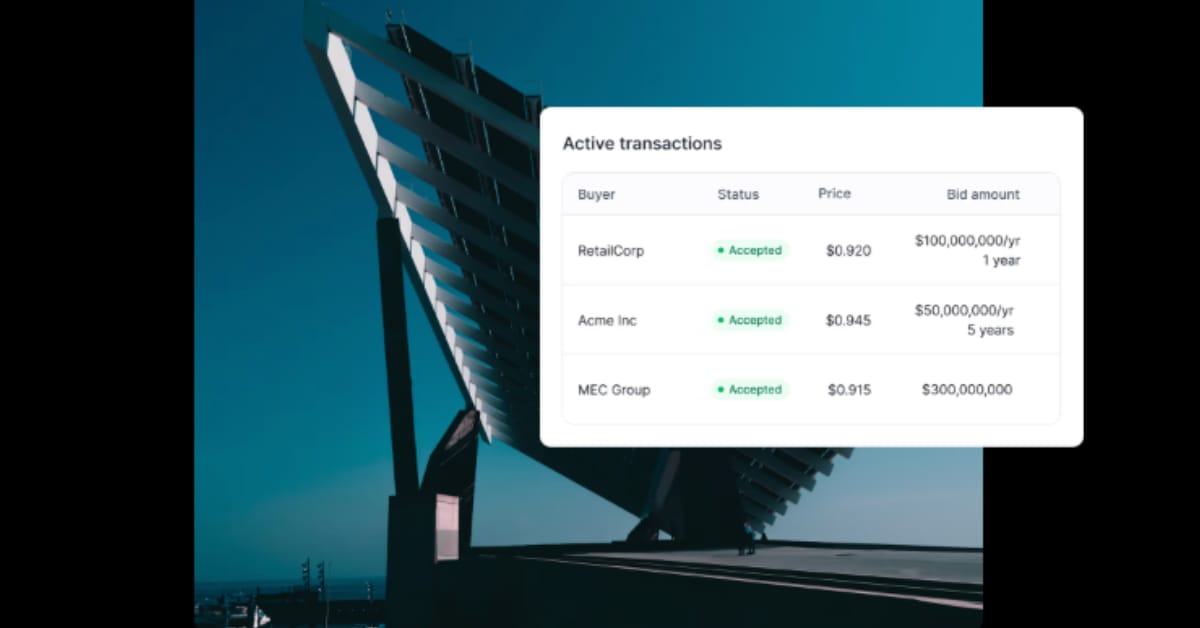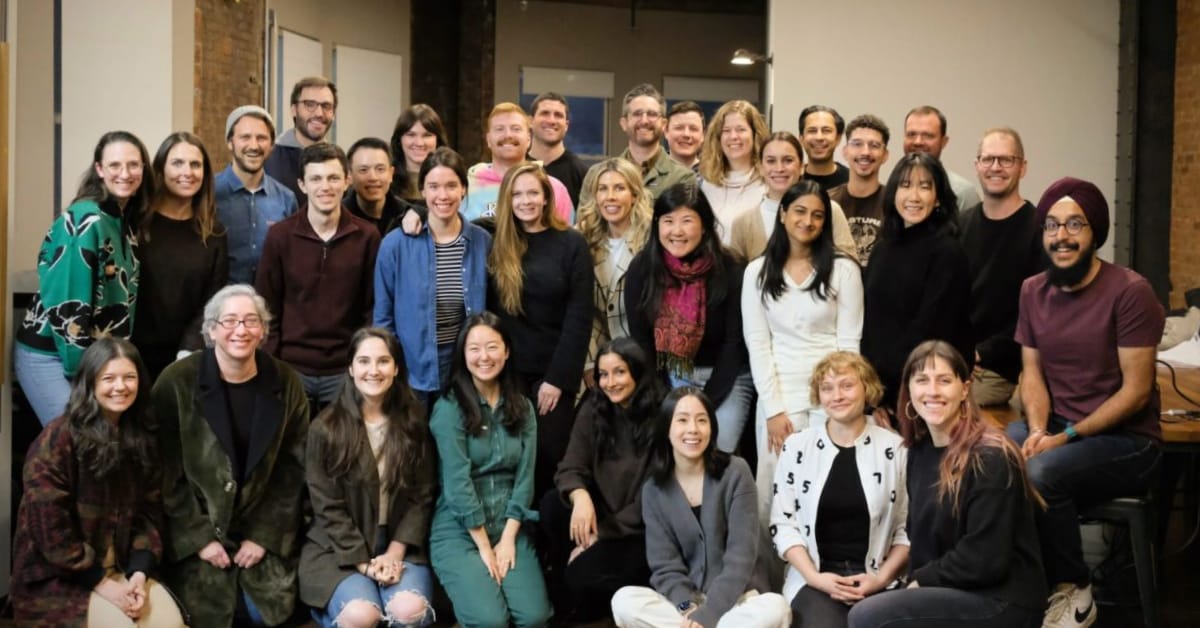- HackSummit
- Posts
- 💸 Crux’s Vision for a More Efficient, Intelligent Energy Capital Market
💸 Crux’s Vision for a More Efficient, Intelligent Energy Capital Market
How Crux is redefining how energy project financing works in the United States
Since joining us at last year’s HackSummit, Crux has grown significantly, both in size and scope.
Recently they closed a Series B funding round, bringing the total venture capital raised to over $77 million, and expanded the team to more than 70 people.
But Crux’s ambitions go far beyond growth, they are redefining how energy project financing works in the United States.
Before he joins us back in New York at the HackSummit (Dec 10-11), we caught up with Alfred Johnson, CEO and Co-Founder to learn more.

Expanding Beyond Tax Credits
Originally known for its central marketplace for transferable tax credits, Crux has broadened its services to also help energy developers and manufacturers raise debt capital and tax and preferred equity.
Energy project developers and manufacturers usually have different financing needs at different stages of the project lifecycle, and some that overlap in timeline or hybrid deal structures.
Crux now supports over 1,000 energy developers, manufacturers, and investors, facilitating more than 120 deals to date.
“We are proud to keep expanding our services to support their needs across the entire capital stack,” says Alfred.
Leading Market Intelligence
Data-driven insights remain a cornerstone of Crux’s strategy.
The company’s 2025 mid-year market intelligence report highlighted significant growth in the transferable tax credit market compared to the first half of 2024 and offered detailed analyses on credit performance, pricing, insurance trends, and more.
The United States is at a critical juncture for energy.
Energy is the central commodity underpinning climate, policy, global alliances, and technology, and AI. Energy demand is rising for the first time in 20 years, driven by electrification, manufacturing, and AI.
Data centers are set to become information factories, consuming electricity around the clock. In many regions, they are already straining the grid.
“We urgently need more infrastructure to meet this moment. The problem is that currently it’s too hard, inefficient, and expensive to raise the necessary capital to build. This is what’s driving us at Crux to continue designing solutions to unblock this bottleneck,” notes Alfred.

Journey to Crux
Alfred ’s journey to Crux is rooted in both government and entrepreneurial experience.
He began his career at the U.S. Treasury during the financial crisis, witnessing markets freeze, not due to a lack of capital, but because the systems themselves had broken down.
Years later, after exiting his previous company, Mobilize, Alfred returned to Treasury during COVID-19 and observed trillions in relief funds slowed by the very systems meant to deliver them.
“The summer of 2022, Allen Kramer and I became obsessed with the frustrating inadequacy of clean energy capital markets,” Alfred recalls.
That summer, policy changes enabled energy developers and manufacturers to sell tax credits for cash to other companies to create a new, untapped market.
Seizing the First-Mover Advantage
Crux’s founding strategy was clear: enter a new market at its inception, build infrastructure, and establish credibility.
“New markets offer unique advantages for technology-driven entrants who can establish early infrastructure and shape industry standards,” Alfred explains.
By starting with transferable tax credits, Crux built capabilities that naturally expanded into tax equity and debt financing, more mature markets that are still deeply interconnected with tax credit transactions.

While policy shifts are an important factor, Alfred emphasizes that tailwinds like growing energy demand, rising utility rates, and AI-driven infrastructure expansion continue to drive private-sector investment into the American clean energy and manufacturing sectors.
Crux’s market data supports this growth trajectory: transferable tax credit market deal volume grew from $8.5 billion in the first half of 2024 to over $20 billion in the first half of 2025.
Insights from Dozens of Deals
Crux has now closed over 120 transactions across solar, wind, storage, microgrids, bioenergy, renewable natural gas, and advanced manufacturing.
Deal sizes range from less than $100,000 to hundreds of millions, with buyers spanning family offices, public and private companies, and Fortune 100 multinationals.
The fastest deal closed in just 17 days.
Some of the key lessons from these transactions include:
Diligence is the biggest friction point: “It takes too long and costs too much. We’re reshaping this by embedding intelligence and AI into these workflows.”
Law firms are critical partners: Beyond legal expertise, they provide market intelligence, risk frameworks, and pattern recognition. Crux has partnered with over 40 leading law firms to co-develop standardized documentation and AI-powered tools.
Centralization drives liquidity: Developers need to raise multiple types of capital, often from different investors. Centralizing financing across stages transforms market dynamics.

Opportunities in Energy Financing
Alfred is particularly excited about AI’s role in scaling U.S. clean energy investment.
And tells us “I believe the key to scaling American clean energy investments lies in leveraging AI to embed human expertise and market intelligence directly into software tools that ensure accuracy, flag risks, and expedite deal closures. At Crux, we’ve been building a growing suite of AI-enabled tools, including our Term Sheet Builder and Diligence Suite.”
Looking Ahead to HackSummit 2025
At HackSummit this December, Crux is eager to connect with other innovators in energy and AI.
The company is hiring across roles, from forward-deployed engineers to commercial team members, and is particularly interested in collaborations that leverage AI to maximize impact and accelerate the buildout of critical U.S. energy infrastructure.
As Crux continues to expand and innovate, its mission remains clear: make energy project financing more liquid, efficient, and intelligent, unlocking the capital needed to power America’s clean energy future.
